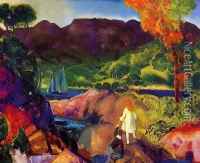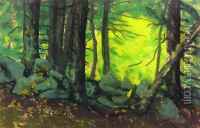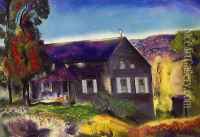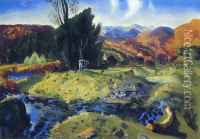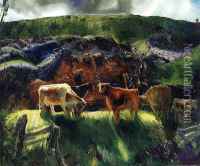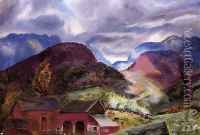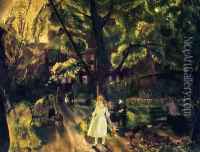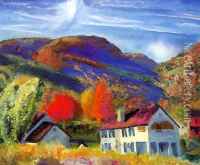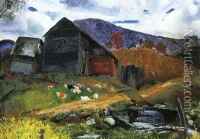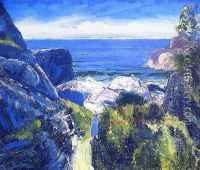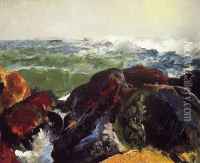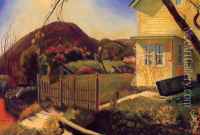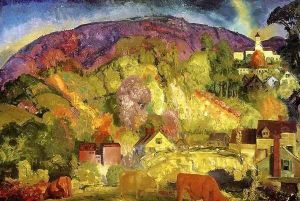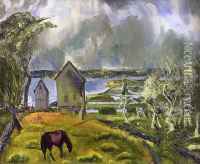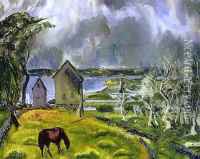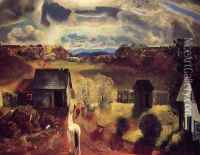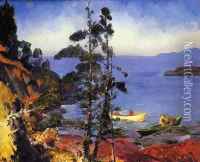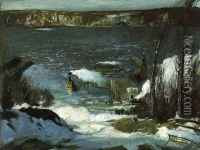Ashcan School Paintings
The Ashcan School, also called the Ash Can School, was an artistic movement in the United States during the early twentieth century that is best known for works portraying scenes of daily life in New York, often in the city's poorer neighborhoods. The most famous artists working in this style included Robert Henri (1865-1929), George Luks (1867-1933), William Glackens (1870-1938), John Sloan (1871-1951), and Everett Shinn (1876-1953).
The artists of the Ashcan School rebelled against both American Impressionism and academic realism, the two most respected and commercially successful styles in the United States at the end of the nineteenth century and the beginning of the twentieth century. In contrast to the highly polished work of artists like John Singer Sargent, William Merritt Chase, Kenyon Cox, Thomas Wilmer Dewing, and Abbott Thayer, Ashcan works were generally darker in tone and more roughly painted. Many captured the harsher moments of modern life, portraying street ki ds (e.g., Henri's Willie Gee and Bellows' Paddy Flannagan), prostitutes (e.g., Sloan's The Haymarketand Three A.M.), alcoholics (e.g., Luks' The Old Duchess), indecorous animals (e.g., Luks' Feeding the Pigs andWoman with Goose), subways (e.g., Shinn's Sixth Avenue Elevated After Midnight), crowded tenements (e.g., Bellows' Cliff Dwellers), washing hung out to dry (Shinn's The Laundress), boisterous theaters (e.g., Glackens'Hammerstein's Roof Garden and Shinn's London Hippodrome), bloodied boxers (e.g., Bellows' Both Members of the Club), and wrestlers on the mat (e.g., Luks' The Wrestlers). It was their frequent, although not exclusive, focus upon poverty and the gritty realities of urban life that prompted some critics and curators to consider them too unsettling for mainstream audiences and collections.
